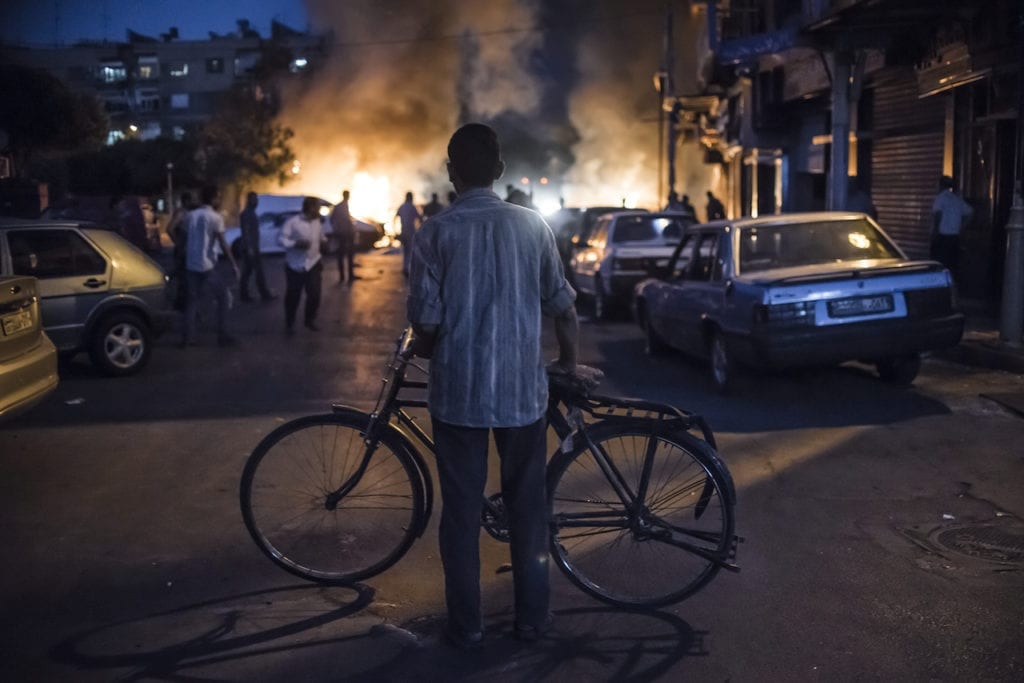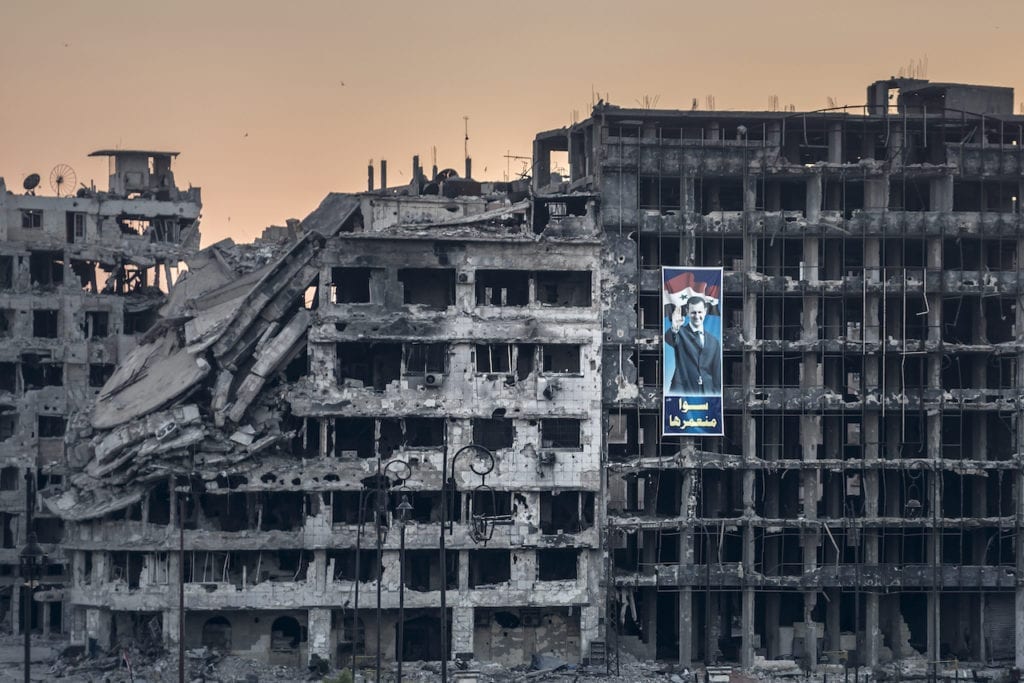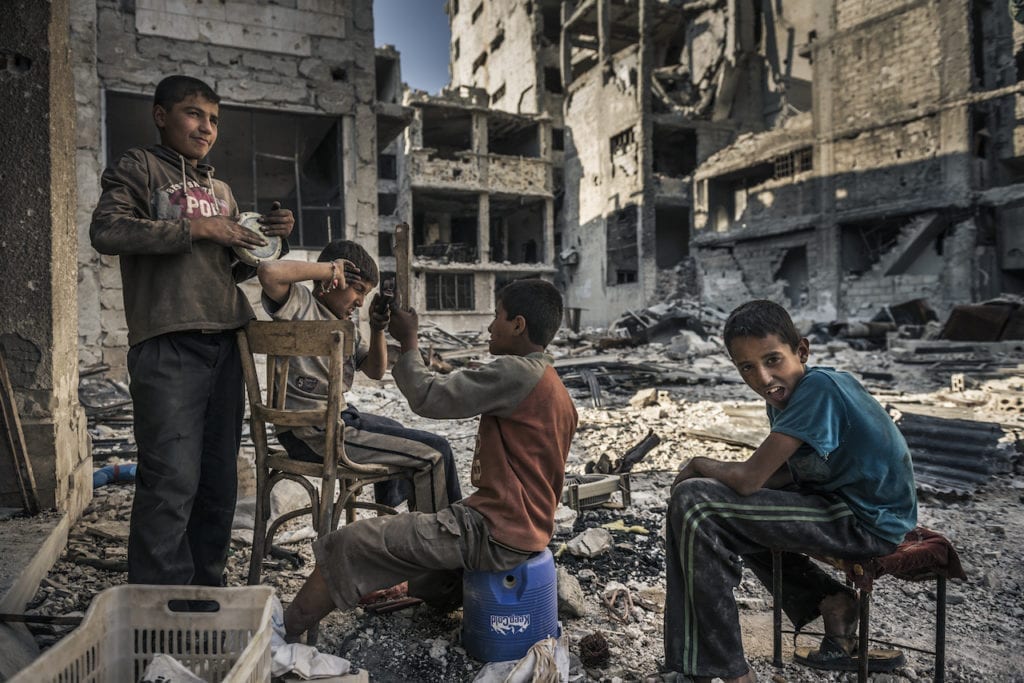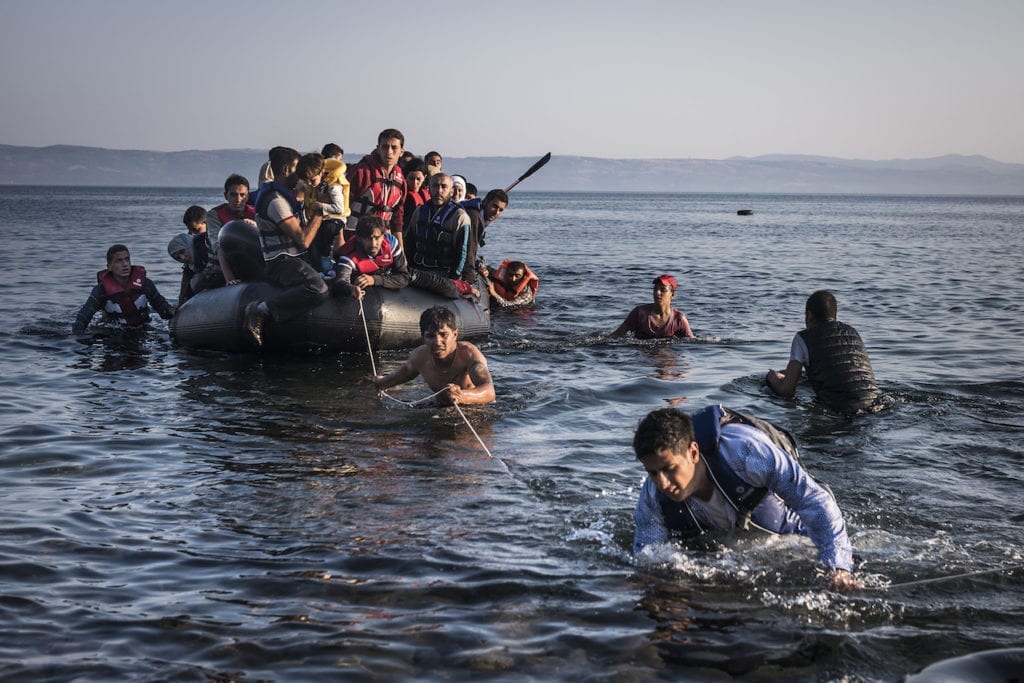“With this exhibition, I will reveal something different to what Western and British society has seen about Syria,” says Sergey Ponomarev. “Most of the visual narratives that come from Syria are shot from the rebel side – people suffering from the government shelling, suffering malnutrition or lack of water, and just recently being attacked with chemical weapons. I will show images from normal life.”
The Pulitzer Prize-winner is talking about his upcoming exhibition at the Imperial War Museum London A Lens on Syria, in which he’s showing two award-winning series created in partnership with The New York Times – Assad’s Syria (2013-2014) and Europe Migration Crisis (2015-2016). His mission, he says, is “to be the eyes of society”.
Ponomarev has been following the Arab Spring since 2011, when anti-government protests first started to emerge in Syria but he says that from the start, “it was clear that photojournalist with Russian background couldn’t join the rebels”. Historically the Soviet Union supported the Syrian government and that remains the case today; “when the Free Syrian army clustered into several Jihadi groups, some of them became Al-Nusra, some of them became Islamic State. I was not able to go there”.
But in mid-2013 he got permission to follow the Syrian government’s side for ten days, and then for another two weeks, a position that brought a moral dilemma with it. He was working under the control of a state “that has been killing my colleagues and a lot of civilians, that is one of the most brutal dictators,” he says, “but I had a responsibility to go there and bring images to the public. I kept in mind the experience of Stanley Greene and Anthony Suau, who did almost the same during the war in Chechnya”.
Ponomarev visited Assad’s jail, for example, which is infamous as a place in which prisoners have been tortured to death. “It was 2013 when I saw one of the worst things I’ve ever seen,” he says. “It was before the Islamic State appeared on the scene or just at the beginning, no reporters were slaughtered yet. At that time, the Syrian State declared that they were fighting many foreign soldiers.
“We requested permission to visit them, but once they had taken us to this disgusting place, they said they weren’t ready to show us the Chechen prisoners yet. Meaning that these people were so badly beaten that their bruises were not healed yet.”
Ponomarev says he still believes in the power of photojournalism “but I don’t believe in the amount of power”. Nowadays we are so overwhelmed by images that “one single image can be very shocking, but would not stop the war like it did in the 1960s with the pictures by Eddie Adams [of Vietnam],” he explains. “Now we can use the international language of storytelling”.
He’s aiming to interact with the viewer with his exhibition, including a selection of objects alongside immersive film footage and colour prints and digital media. The IWM will also host a series of exhibitions and events about the ongoing situation alongside his show, calling its season Syria: Story of a Conflict.
Syria: Story of a Conflict, which includes Sergey Ponomarev’s exhibition A Lens on Syria, is on show from 27 April – 03 September. www.iwm.org.uk





